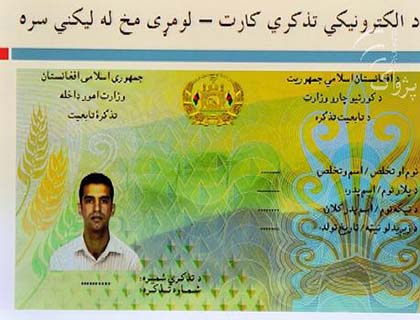The Independent Election Commission head Fazal Ahmad Manawi has been calling for quick implementation of the new voter registration. He has warned repeatedly in last couple of weeks that if the registration does not happen before 2014 elections, it would cause severe crisis. He said, “Success in voter registration is in fact success in elections. If this project fails, we will not have a successful election without fraudulent issues. There is limited time left and we are still at the beginning.”
IEC has already proposed the registration plan, and it needs to be approved from the parliament. However, Government seems to be less interested about it. Current administration has been emphasizing on the previous voter list used in 2009 elections that caused the deadlock and crisis undermining the credibility and legitimacy of elections. Such a crisis could derail the entire process and we could plunge into political instability much more serious and threatening than 2009.
The Government’s plan to launch the electronic ID cards registration and distribution has been delayed several times. President Karzai was supposed to have the first e-tazkira this month, but it has been delayed. Opposition parties and civil society organization have called for the electronic ID cards to be used for election, after its completion. The Government has not approved the design, and an intentional delay-tactic is in play to waste time before 2014 so that the old voter registration lists remain only option.
Those cards can be bought at cheap prices all over the country. There were over 17 million of them, while actual eligible voters for this year are about 15 million. The fraud machinery could actually hijack the election results through these lists and ghost voters, or in other words, a repeat of what happened in 2009. Two million nonexistent fraud registered voters can decide the fate of Presidential elections in 2014.
An election using the old voter lists will be outright fraud and illegitimate. Voters are not linked to any particular polling station, thus more than one card issued to one person in thousands.
Officials say the e-tazkira project will take time and it cannot be completed before 2014 elections. Apart from that, the international community is reluctant to provide about $115 million for the program. Officials say even if the project is launched on a fast-track, only about 8 million voters can be registered just before coming polls, and that too only in urban centers and major provincial centers.
That is a major issue, but nonetheless in our sluggish system, it would be a great achievement. A mechanism could be sort out to deal with the remaining unregistered voters. Either the remaining 5 million people could use old lists, or a separate rapid non-electronic registration program be launched in places where e-tazkiras cannot be completed by time.
The Cooperation Council of Political Coalitions and Alliances recently suggested a comprehensive plan for the electronic ID card registration, which could be implanted in 18 months.
The proposal says there are 365 districts and about 200 urban areas which totals 565. In populated districts and urban centers, the number of e-tazkira registration centers should be planned according to population. It number of electronic ID distribution center could reach to 600. Therefore, proposing following steps for timely implementation and completion of the project:
-
A 10-member staff team should be assigned to each e-tazkira registration and distribution center across the country. Total 6000 personnel will be required.
-
The process of recruitment, training and deployment of staff to the registration centers should be completed in first six months.
-
A swift-working procedure should be planned, which could be possible through pre-induction training of the staff.
-
If each distribution center register at least 100 people a day, in one month 1560000 persons and in the next 12 months 18720,000 persons will be distributed the electronic identity cards.
-
After distribution of the e-tazkira, Interior Ministry, Directorate General of Census and IEC could coordinate to complete the voter registration lists.
This proposal by the opposition parties seems to suggest that e-tazkira could be issued the same day a person visits the registration center. Only their date could be recorded, but ID cards can only be produced in Kabul. The logistic issues will take time and almost certainly it would be impossible to complete distribution of electronic ID cards to all Afghans before 2014 elections. Even if they design the project to cover only the eligible voters in first phase before elections, hardly 10 million people could be registered.
The only feasible option is that the fast-track registration of e-tazkira covering only eligible voters should be launched in first phase. The remaining voters, about 5 million, should be covered by a separate non-electronic registration by IEC, which could be done on the day of polling or prior to that.
The Government and parliament needs to urgently address this crucial issue.

